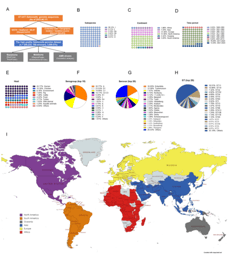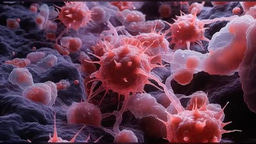Non-aromatic annulene-based aggregation-induced emission system via aromaticity reversal process
Published in Chemistry

The utilization of microscopic molecular motion to design macroscopic materials is receiving gradually more attention as it not only affords versatile functional materials but also broadens the fundamental understanding of dynamic molecular systems. In this regard, scientists have made great achievements with fascinating concepts and materials such as in making molecular machines, stimuli-responsive polymers and smart fluorescent materials etc. were all well proposed and developed. Among them, a concept that has attracted increasing attention is aggregation-induced emission (AIE), which was proposed by Prof. Ben Zhong Tang from HKUST in 2001. Typical AIE systems show quenched emission in the solution state since the active intramolecular motion accelerates the non-radiative decay of the excited state, while in the solid state the restriction of intramolecular rotation (RIR) and intramolecular vibration (RIV) suppresses the non-radiative decay and thus generate a high fluorescence quantum efficiency. So far, AIE systems based on RIR have been deeply investigated both mechanistically and in practice, based on which versatile solid-state fluorescent materials and stimuli-responsive fluorescent probes were developed. However, molecular systems based on RIV are still rather limited in variety due to the unclear molecular design and the intrinsic difficulty in regulating the vibrational magnitude than the rotation magnitude, although vibrations are more general than rotation as a motion mode. Additionally, an in-depth understanding of the excited state molecular motion behavior and elucidation of the origin of the molecular motion are yet to be explored.

On the other hand, aromaticity is among the mostly important concepts in organic chemistry due to its critical role in determining the chemical and photophysical characteristic of organic π-molecules. People’s understanding on aromaticity is keeping advancing with several breakthroughs achieved in recent years. One of the milestones in aromaticity research is the aromaticity reversal theory proposed by Baird in 1972, which indicates that the aromaticity (anti-aromaticity) of annulenes in the triplet excited state (T1) is reversed to that in the ground state. In other words, annulenes with [4n] π electrons show non-aromatic character in the ground state but aromatic character in the excited state. Since the aromaticity reversal will result in a change of molecular conformation, the excited state aromaticity reversal thus can possibly result in a large amplitude conformation flip and intramolecular vibration, which intrinsically are very similar as the non-radiative decay pathway of AIE process.
We have been interested in the excited intramolecular motion behaviors. We tried to elucidate the influence of excited state intramolecular motion on the luminescence process from different viewpoints. In our current work, we found the aromaticity reversal can work as a driving force to induce the excited intramolecular vibration, leading to typical vibrational AIE system. Therefore, this work demonstrates a novel and general strategy for the design of vibrational AIE system. In addition, it intrinsically provides a new viewpoint to understand the excited intramolecular motion behavior of AIE system and other luminescent system. Besides the mechanism study, we also explored some primary applications of this special AIE system. Check out our paper “Non-aromatic annulene-based aggregation-induced emission system via aromaticity reversal process” in Nature Communications for more details. https://www.nature.com/articles/s41467-019-10818-5
Follow the Topic
-
Nature Communications

An open access, multidisciplinary journal dedicated to publishing high-quality research in all areas of the biological, health, physical, chemical and Earth sciences.
Related Collections
With Collections, you can get published faster and increase your visibility.
Women's Health
Publishing Model: Hybrid
Deadline: Ongoing
Advances in neurodegenerative diseases
Publishing Model: Hybrid
Deadline: Dec 24, 2025



Please sign in or register for FREE
If you are a registered user on Research Communities by Springer Nature, please sign in